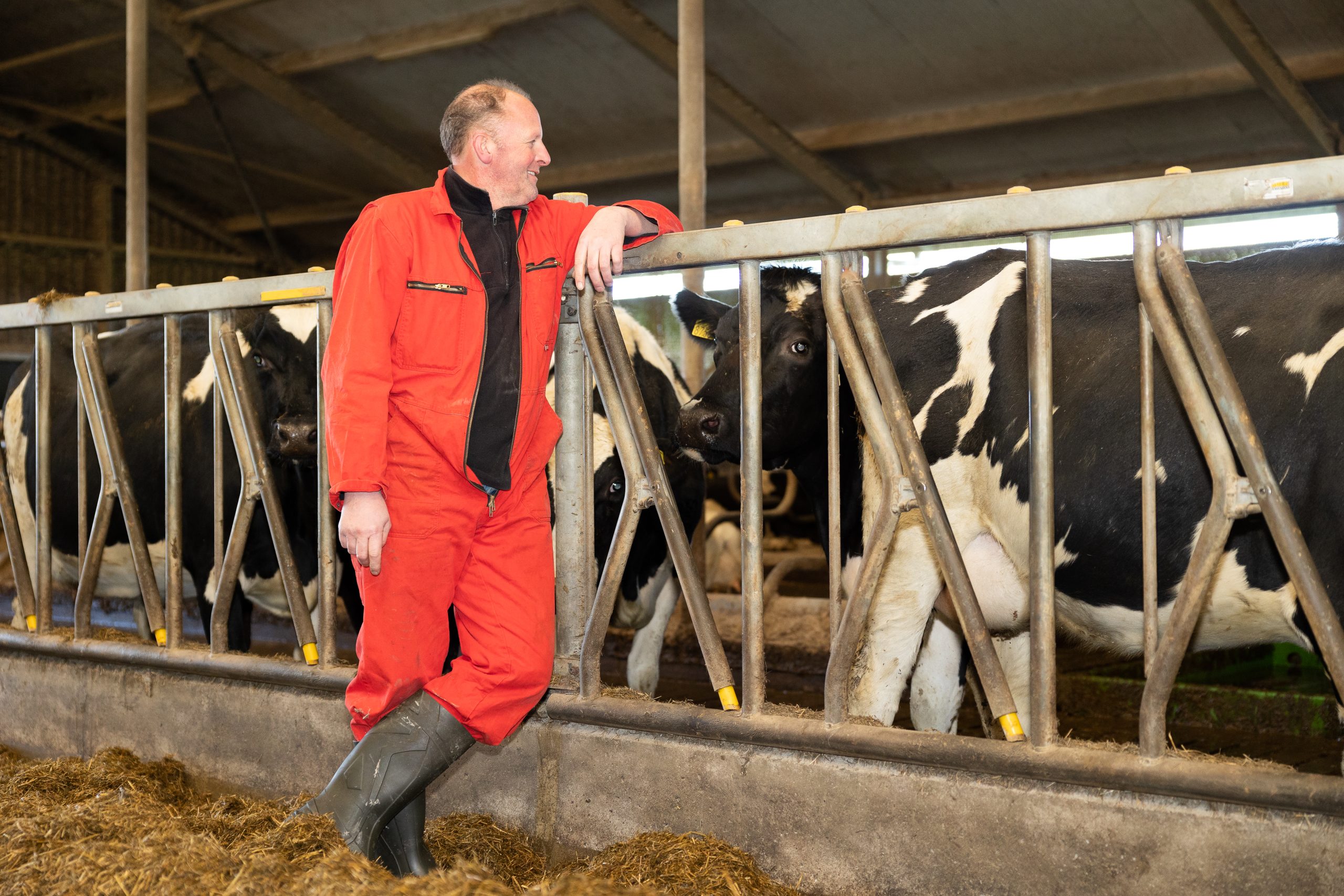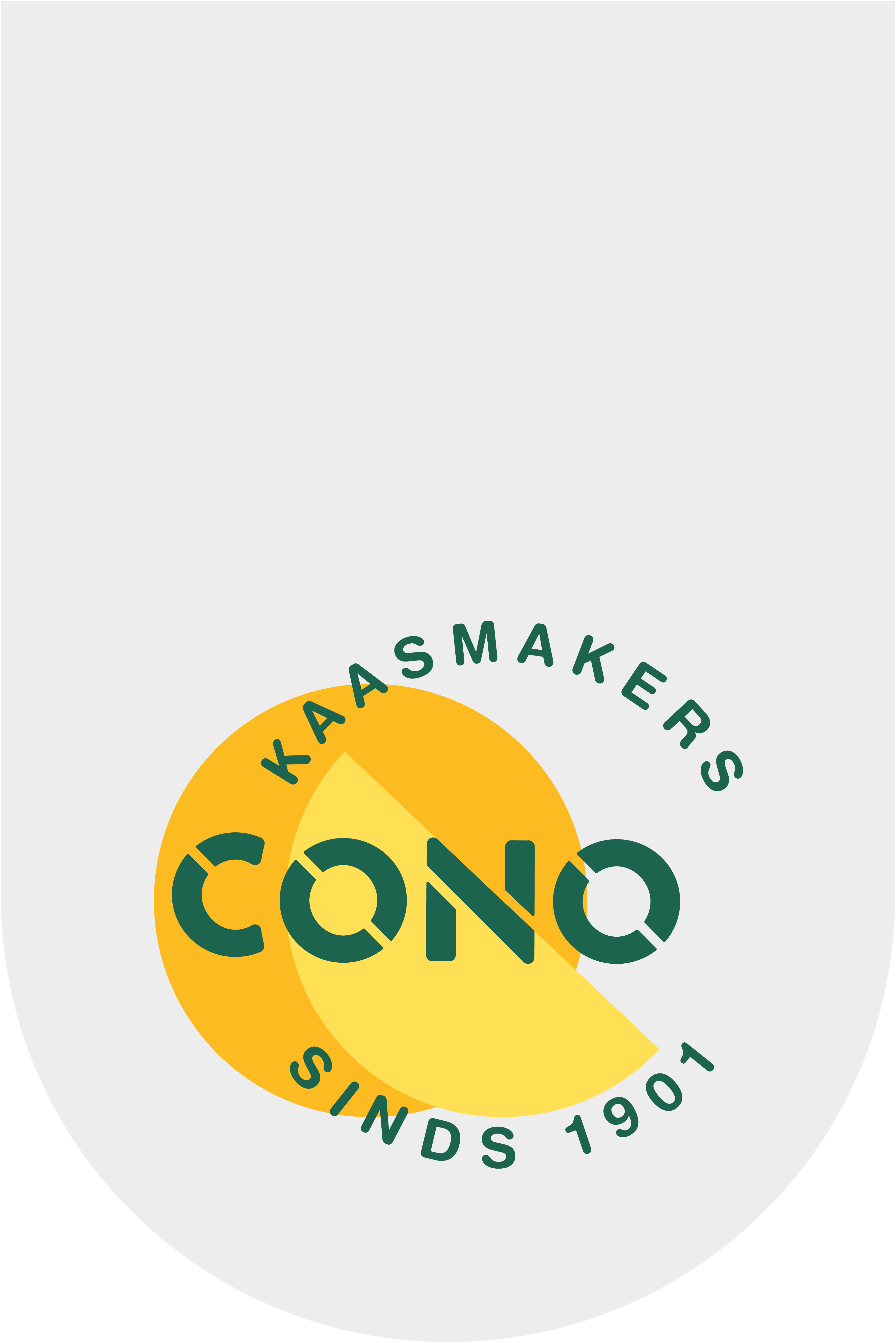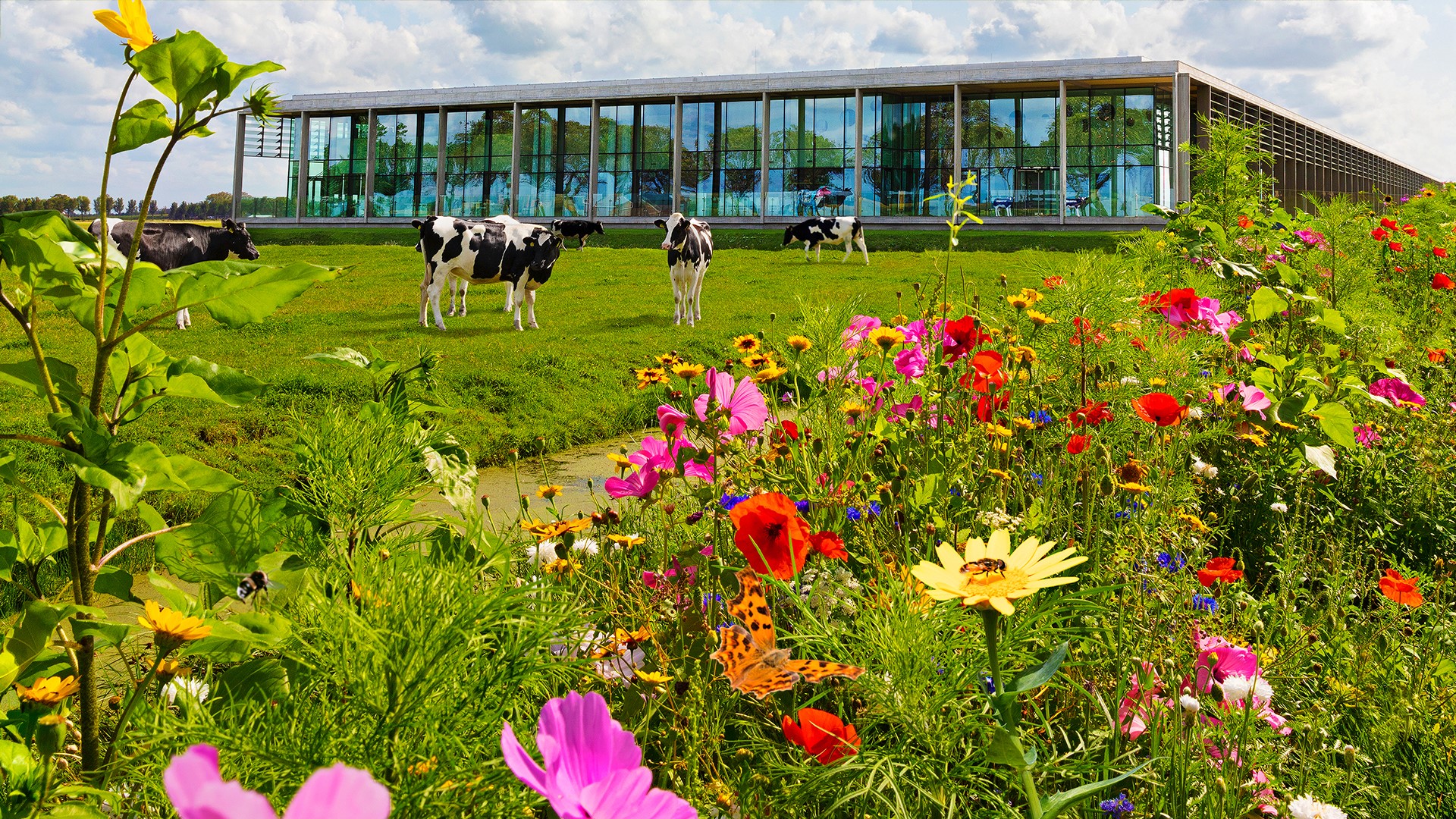Berto Klaver from Zuidermeer does have a very human view of how he treats his cattle. "I go by myself: if you have to work hard, you wear out sooner. So if cows don't have to give the utmost, it's better for their well-being. If we make sure the cows have a good life, they naturally give the best milk."
One hundred cows are on the books of cattle farmer Berto Klaver. "I am only on my own, then I find such a number sufficient. Besides, they have plenty of space on my fifty acres of land." Because grass, that's what it's all about on Berto's farm. In summer, therefore, his cows walk no less than 22 hours a day outside. Only to be milked do they briefly come inside.

Sustainable barn
Even when the cows are inside, they are well taken care of. This is because Berto has a so-called MDV stable. MDV stands for Maatlat Duurzame Veehouderij. This certificate guarantees measures for animal health and welfare. "I deliberately wait until the grass is a bit riper, because then it contains a lot of good fiber. That is good for digestion and the cows get thicker manure. That, in turn, is important so they don't stand in too much wetness, thus reducing the risk of inflammation of the claws." In addition, the cows have extra spacious cubicles with a special bed that is not only nice and soft to lie on, but so gives them more grip when they stand up. A safety feed rack prevents the cows from getting their heads stuck. And the slatted floors are extra rough to minimize the risk of slipping - even when the cows are overenthusiastic.
Self-sufficient in electricity
Sustainable farming is also reflected in the technology within the farm. For example, there are nearly three hundred solar panels on the roof, making the farm completely self-sufficient in electricity. The milking machine is equipped with a smart feature that automatically switches to a lower (and thus energy-efficient) setting if only a few cows are milked or none at all. Thanks to a digital weather station, the screens on the open side of the barn automatically go down when there is too much wind, rain and sunlight. And a manure robot drives through the entire barn eight times a day to keep the floors as clean as possible. In addition, Berto measures nitrogen, ammonia,CO2 and humidity in the barn. The results are compared with the amounts measured in the outside air by other sensors in my yard. So I know exactly how things are on my farm. So yes, I consider my farm quite sustainable. And I make sure to always be on the safe, animal and climate friendly side."

